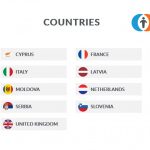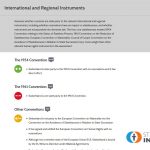By Nina Murray (Head of Policy and Research at the European Network on Statelessness, ENS), GLOBALCIT collaborator.
A stateless person is someone who has no nationality, someone who is not recognised as a citizen by any State. Statelessness affects over half a million people in Europe – both recent migrants and those who have lived in the same place for generations – denying these people their fundamental rights. Statelessness is caused by state succession, gaps in nationality laws, discrimination, displacement, and nationality stripping.
For many people, statelessness means denial of the basic rights many of us take for granted: to go to school or work, to get married or register the birth of your child, to ‘legally exist’. All European states have obligations in international law to protect stateless people and prevent statelessness, but in many cases, these have not been translated into effective laws at the national level.
Moreover, countries across Europe have very different approaches to dealing with statelessness. There is no clear, consistent, or comprehensive approach to identifying who is stateless, granting protection to stateless people, and preventing children from being born stateless in Europe.
In response to this the European Network on Statelessness – a pan-European alliance of over 140 organisations and individuals working to end statelessness – has launched a new online tool allowing for easy comparison of how different European countries protect people left without nationality.
What is the Statelessness Index and how to use it?
The Statelessness Index is an online tool that provides extensive country by country analysis of law, policy and practice, which has been benchmarked against international norms and good practice and then assessed using five categories, ranging from the most positive to the most negative. It allows users to quickly understand which areas of law, policy and practice can be improved by states and which can be looked to as examples of good practice in addressing statelessness. The Statelessness Index covers 18 European countries (soon to be expanded to 24).
If you are interested in the detail of how a country performs in its efforts to protect stateless people and prevent and reduce statelessness, you can select a country page and review its performance under all five themes and subthemes.
In addition, the Index allows users to instantly compare the performance of up to four countries using the comparative tool. To facilitate comparison, the information has been split into five themes (International and Regional Instruments; Statelessness Population Data; Statelessness Determination and Status; Detention; and Prevention and Reduction) and then further divided into relevant subthemes that try to capture further details across different countries with different contexts and legal systems.
Why a Statelessness Index?
The Index for the first time provides free and accessible, user-friendly information that highlights not only legislative gaps, but also where possible, gaps in implementation. Critically, the Index is designed to facilitate effective monitoring and advocacy and to support governments to comply with their international and regional obligations.
The Index will be an important tool for different audiences. It can support civil society organisations and lawyers helping people affected by nationality problems or advocating with decision-makers for reform; government officials drafting new procedures can look to the Index for examples of good practice from neighbouring countries; students and academics can use it in their research; and stateless people will be able to access important information about their rights and entitlements.
There are other invaluable online databases that examine nationality law, detention policy and practice, and integration policies, for example. And thematic or comparative research on statelessness has been undertaken in specific countries. But our Index is the first to bring together comprehensive and accessible comparative analysis of European countries’ efforts to address statelessness.
How are the country data gathered and analysed?
The country data are gathered through a detailed survey, structured around the themes and subthemes. The surveys are completed by country experts, referenced with links to sources, reviewed by a second country expert, and then returned to the ENS Secretariat for analysis. The country data are collated and analysed centrally by two members of the ENS Secretariat, who individually assess and benchmark each country’s performance under each question in the survey against the norms and good practice identified, before agreeing a final assessment for each. To find out more about the methodology behind the Index click here.
Besides comparing the performance of countries in terms of how they address statelessness, users can also download the original country surveys containing all the data, including links and references to national law and policy, as well as details of the norms and good practices, which formed the basis of the assessment of a country’s performance. Publishing this data and the sources behind the Index not only helps to ensure transparency, but will also support the work of researchers, lawyers and other experts.
Who produces the Index?
The Statelessness Index was designed and is actively maintained by ENS in partnership with a network of members, partners, ENS volunteers and consultants (you can read a list of those involved here). The data and research behind the Index rely on the extensive knowledge and expertise of the ENS membership. ENS members involved in the Index as country experts include researchers, lawyers, NGOs and other civil society actors. You can see who the country researchers are on each country page.
Second country experts include lawyers, academics and in some cases representatives from UNHCR offices with relevant country-level expertise. However, the final information presented in the Index is by ENS alone and should not be construed to formally represent the position of UNHCR or other external contributors.
Future plans for the Index
ENS is working with its members and partners to develop the Index and welcomes all feedback on any aspect from its users. We want the tool to be as useful as it can be. ENS intends to continue to increase the coverage of the Index as far as possible across Europe, with six more countries to be added by early 2020. We will also continue to work with our members and partners to develop other useful resources from the Index data, such as policy briefings, training packages, and awareness raising materials. If you have ideas about how the Index could be developed in the future, please tell us!






